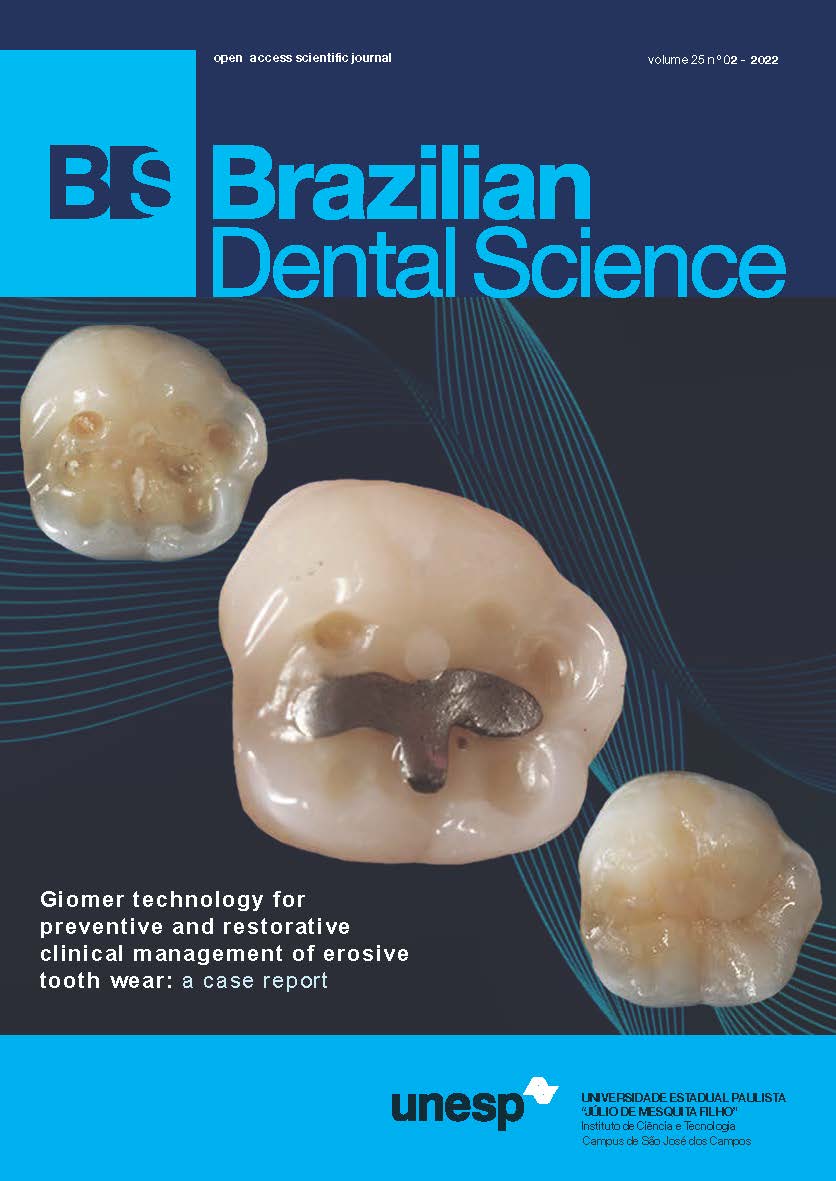Dental stem cells in intraoral regenerative therapy: a systematic review
DOI:
https://doi.org/10.4322/bds.2022.e2771Abstract
Objective: 1) To critically review the published literature on applications of dental stem cells in the regeneration
of intraoral tissues. 2) To provide an evidence-based level on research regarding application of dental stem cells
in intraoral tissues regeneration. Methodology: This systematic review is conducted as per the JBI guidelines
and reported as per the PRISMA. An initial literature search of papers published between 2004 and 2018 yielded
421 manuscripts. Nineteen studies satisfied the inclusion / exclusion criteria and were included for qualitative
synthesis. Studies were categorized as animal (11) and human (8) trials. Five independent reviewers critically
assessed the included studies. Risk of bias was assessed using SYstematic Review Centre for Laboratory animal
Experimentation (SYRCLE) bias risk tool, robins-I tool for non-randomised clinical trial and Cochrane Collaboration’s
Tool for randomised clinical trial. Evidence levels were assessed based on JBI Criteria. Results: Animal trials
mainly focused on periodontal regeneration. A high or unclear Risk of bias was more commonly found amongst
animal studies. Laboratory, clinical and radiographic evaluation were used to assess the outcome. A total of
Eight Human studies were conducted on a total samples size of 153 upon a wide age ranging from seven years
to 60 years. Nearly 70% of the human studies used DPSC for regenerating alveolar bone defects. Conclusion:
Appropriate well designed double-blind randomized clinical trials of longer duration are yet to be performed.
Evidence for the included studies were 1C and 1D as per the JBI Criteria. Stem cell therapy demonstrated
promising results in Periodontal tissue and alveolar bone regeneration. However, the number of studies to claim
such a benefit are very limited.
KEYWORDS
Dental stem cell (DSCs); Stem cells from human exfoliated deciduous teeth (SHED); Dental pulp stem cells
(DPSC); Intraoral application; Human study; Animal study.
Downloads
Published
Versions
- 2022-03-31 (2)
- 2022-03-31 (1)
How to Cite
Issue
Section
License
Brazilian Dental Science uses the Creative Commons (CC-BY 4.0) license, thus preserving the integrity of articles in an open access environment. The journal allows the author to retain publishing rights without restrictions.
=================




























